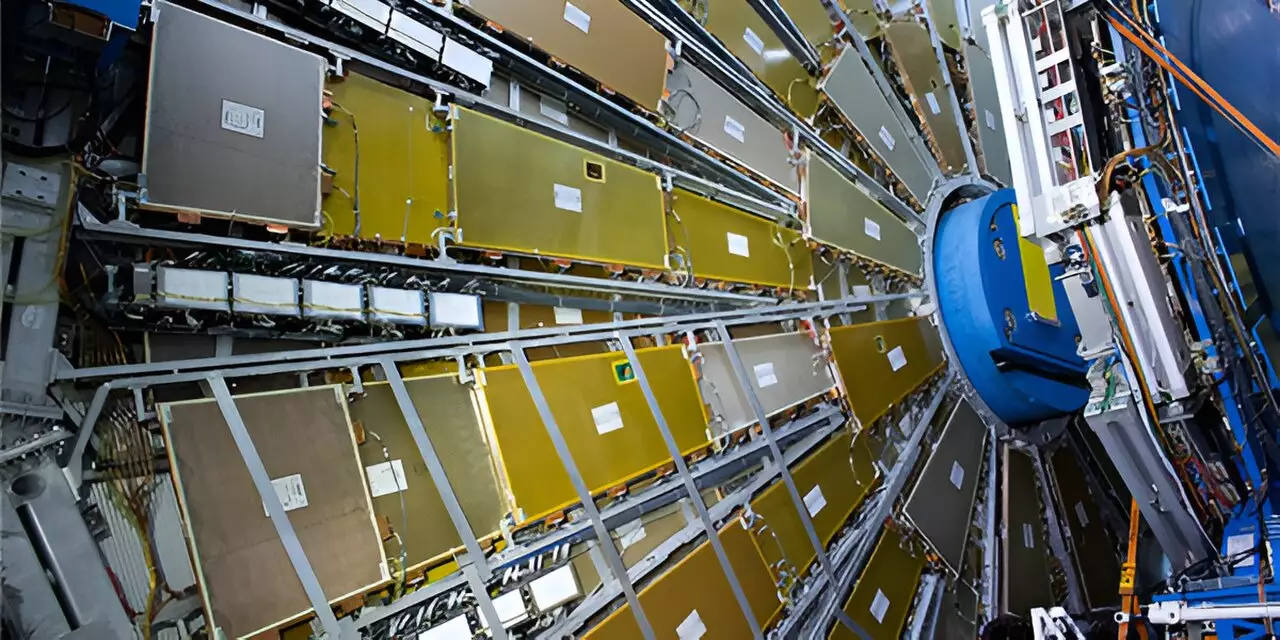The field of particle physics has recently witnessed significant revelations that challenge existing theoretical frameworks. Professors Andreas Crivellin of the University of Zurich and Bruce Mellado from the University of the Witwatersrand have made remarkable observations regarding particle interactions, specifically highlighting deviations that suggest the potential existence of new bosons. Such anomalies, particularly those related to multi-lepton production, are not merely statistical noise but seem to indicate a deeper, unexplained layer of complexity in our understanding of the universe’s fundamental components.
The researchers point out that these multi-lepton anomalies provide a striking prediction: the existence of a Higgs-like boson that is heavier than the one discovered in 2012. Mellado explains that this proposed boson could arise from the decay of an even larger, undiscovered boson. This notion opens up exciting possibilities for physicists, as it could lead to the identification of new particles altogether. This research holds great importance for particle physics, as it embraces an era of discovery predicated on anomalies that defy the expectations set by the established Standard Model.
The history of particle physics has been punctuated by the hunt for the Higgs boson, which was ultimately discovered at the Large Hadron Collider (LHC) in 2012. The implications of this discovery are profound, as it underscored how fundamental particles acquire mass—an essential concept in the realm of theoretical physics. The journey towards uncovering the Higgs boson began with theoretical predictions dating back to 1964; however, its actual detection involved rigorous experimentation and collaboration among scientists worldwide, including significant contributions from South African physicists.
Higgs’ discovery served not only to confirm a key element of the Standard Model of particle physics but also ignited further inquiry into the unexplained phenomena that it cannot account for. Despite its monumental significance, the Standard Model leaves numerous questions unanswered, particularly concerning the nature of dark matter and dark energy—two concepts believed to make up a vast majority of the universe yet remain elusive in their characterization.
Crivellin and Mellado adeptly delve into the nature of anomalies by discussing their statistical significance and theoretical implications. Anomalies, by definition, represent data that diverges from what is traditionally expected. In the context of their findings, they encountered unexpected excesses in lepton production, specifically electrons and muons, during high-energy collision events at the LHC. Such findings would not merely prompt refreshing prior methodologies but also necessitate a reconsideration of the fundamental interactions at play, potentially indicating yet undiscovered forces of nature.
These deviations demonstrate the potential for anomalies to yeild indications of new physics, beckoning a larger exploration into realms that the current theories fail to adequately explain. For instance, historically, pivotal discoveries in particle physics have often been foreshadowed by such inconsistent observations, suggesting a paradigmatic shift might be on the horizon.
The ongoing discourse surrounding these anomalies fuels optimism within the scientific community, as researchers speculate on the existence of new bosons and potential extensions to the Standard Model. As Mellado articulates, the implications of confirming these deviations could result in transformative insights into fundamental forces and further delineate the characteristics of matter in the universe.
The journey toward substantiating the existence of these new bosons is also a testimony to the collaborative spirit of the scientific community—a venture that began with theoretical discussions at an international workshop in South Africa and continues to evolve through dedicated research and experimentation.
The work of Crivellin and Mellado not only charts a promising path into unexplored theoretical territory but also pays homage to the late Professor Daniel Adams, who played a pivotal role in advancing particle physics in South Africa through the establishment of collaborations with the European Organization for Nuclear Research (CERN). Such legacies inspire future generations of physicists to pursue knowledge and understanding, emphasizing the importance of foundational research within a global scientific paradigm.
While we stand on the shoulders of giants who paved the way to our present understanding of particle physics, the quest for new bosons ignites curiosity and determination to push the boundaries of knowledge. In doing so, we may very well unlock secrets about the universe and our fundamental existence that have remained hidden from sight. As the investigation into the intriguing anomalies at the LHC progresses, it is clear that the pursuit of truth in particle physics is far from over.

